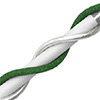Aug 06, 2024 (Nanowerk News) Electronic waste, or e-waste, is a rapidly growing global problem, and it’s expected to worsen with the production of new kinds of flexible electronics for robotics, wearable devices, health monitors, and other new applications, including single-use devices. A new kind of flexible substrate material developed...
Researchers reveal atomic-scale details of nanocatalysts’ active sites
Aug 06, 2024 (Nanowerk News) The chemical and energy industries depend upon catalysts to drive the reactions used to create their products. Many important reactions use heterogeneous catalysts — meaning that the catalysts are in a different phase of matter than the substances they are reacting with, such as solid...
A cleaner, more efficient way to process and recycle rare earth elements
Aug 06, 2024 (Nanowerk News) The world is going to need a lot of weird metals in the coming years, according to chemistry professor Justin Wilson at UC Santa Barbara. But he isn’t talking about lithium, cobalt or even beryllium. Wilson’s interested in dysprosium, which is so hidden in the...
Bioelectronic suture monitors wound healing in real-time
Aug 06, 2024 (Nanowerk Spotlight) The complex process of wound healing has long challenged medical professionals seeking to monitor recovery accurately and non-invasively. Traditional methods of assessing wound status often rely on visual inspection or periodic sampling, providing only intermittent glimpses into the healing process. These limitations have spurred research...
Molecules get a boost from metallic carbon nanotubes
Aug 06, 2024 (Nanowerk News) A Lawrence Livermore National Laboratory (LLNL) team has found that pure metallic carbon nanotubes are best at transporting molecules. Molecule separations play an ever-increasing role in modern technology from water desalination to harvesting critical materials to high-value chemicals and pharmaceuticals manufacturing. To enhance water and...
Soft gold enables connections between nerves and electronics
Aug 06, 2024 (Nanowerk News) Gold does not readily lend itself to being turned into long, thin threads. But researchers at Linköping University in Sweden have now managed to create gold nanowires and develop soft electrodes that can be connected to the nervous system. The electrodes are soft as nerves,...






